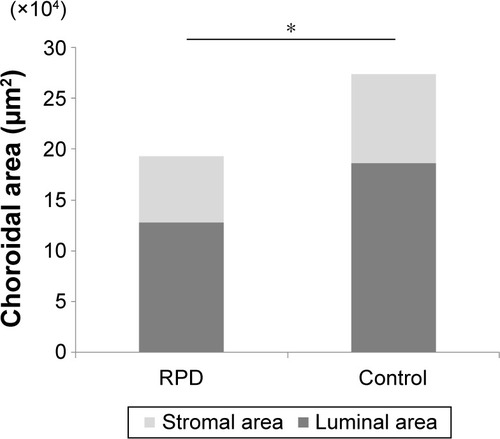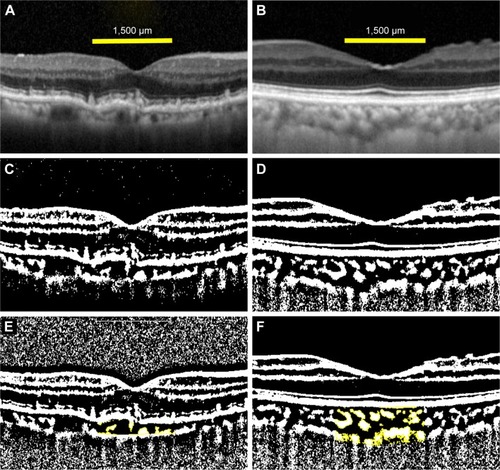Figures & data
Table 1 Characteristics of eyes with RPD and those of the control
Figure 1 Subfoveal choroidal areas of EDI-OCT image in eyes with RPD and control eyes.
Abbreviations: EDI-OCT, enhanced depth imaging optical coherence tomography; RPD, reticular pseudodrusen.

Table 2 Results of choroidal binarization to quantify the total, luminal, and stromal choroidal areas in patients with RPD and in control subjects
Figure 2 EDI-OCT images of an eye with RPD and a control eye.
Abbreviations: EDI-OCT, enhanced depth imaging optical coherence tomography; RPD, reticular pseudodrusen.

